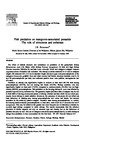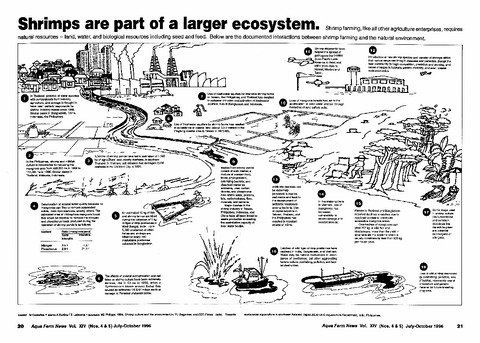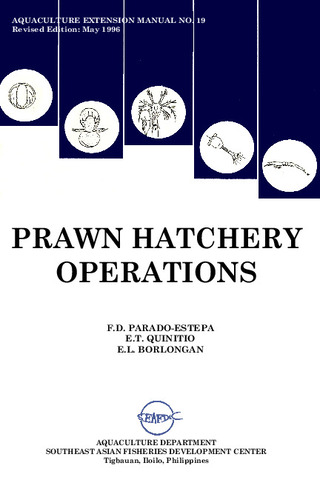Will microbial manipulation sustain the ecological balance in shrimp (Penaeus monodon) hatcheries?
Share
Abstract
A shift in preferred methods employed to contain bacterial diseases in the hatchery phase of shrimp culture has resulted largely from the unsuccessful control by and deleterious effects of chemotherapy. Manipulation of hatchery microbial ecology has gained popularity, but for successful implementation, this niche-filling approach requires a thorough understanding of the epidemiology of bacterial diseases in the hatchery. This study examined the responses of Vibrio harveyi populations, (associated with luminescent vibriosis in shrimp larvae) to various physico-chemical factors and various hatchery components. Results showed that V. harveyi had a wider range of tolerance to environmental parameters than larvae of Penaeus monodon, such that control measures based on manipulation of these parameters might not be feasible. However, it was evident from the results that there were components in the shrimp hatchery environment that could be manipulated to control high populations of V. harveyi. The natural microflora of seawater, as well as the microbial flora associated with the diatoms Skeletonema costatum and Chaetoceros calcitrans negatively affected the survival of V. harveyi in experimental mixed cultures. The successful manipulation of such benign microbial components to compete with and exclude potential pathogens is necessary to sustain ecological balance in the shrimp hatchery environment.
Suggested Citation
Lavilla-Pitogo, C. R., Albright, L. J., & Paner, M. G. (1998). Will microbial manipulation sustain the ecological balance in shrimp (Penaeus monodon) hatcheries? In T. W. Flegel (Ed.), Advances in Shrimp Biotechnology : Proceedings to the special session on shrimp biotechnology, 5th Asian Fisheries Forum, 11-14 November 1998, Chiengmai, Thailand (pp. 185–192). Bangkok, Thailand: National Center for Genetic Engineering and Biotechnology.
Subject
Taxonomic term
Collections
Related items
Showing items related by title, author, creator and subject.
-
Fish predation on mangrove-associated penaeids: The role of structures and substrate
Primavera, J. H. (Elsevier, 1997)The effect of habitat structure and substratum on predation of the greasyback shrimp Metapenaeus ensis (De Haan), white shrimp Penaeus merguiensis De Man and tiger shrimp Penaeus monodon Fabricius by sea bass Lates calcarifer ... -
Shrimps are part of a larger ecosystem
Southeast Asian Fisheries Development Center, Aquaculture Department (Aquaculture Department, Southeast Asian Fisheries Development Center, 1996)The document illustrates the interactions between shrimp farming and the environment. -
Prawn hatchery operations
Parado-Estepa, Fe D.; Quinitio, Emilia T.; Borlongan, Emeterio L. (Aquaculture Department, Southeast Asian Fisheries Development Center, 1996-05)The manual, an updated version of the 1984 SEAFDEC/AQD manual, presents the underlying principles and step-by-step instructions of prawn larval and post-larval rearing. The techniques described are not only applicable to ...





